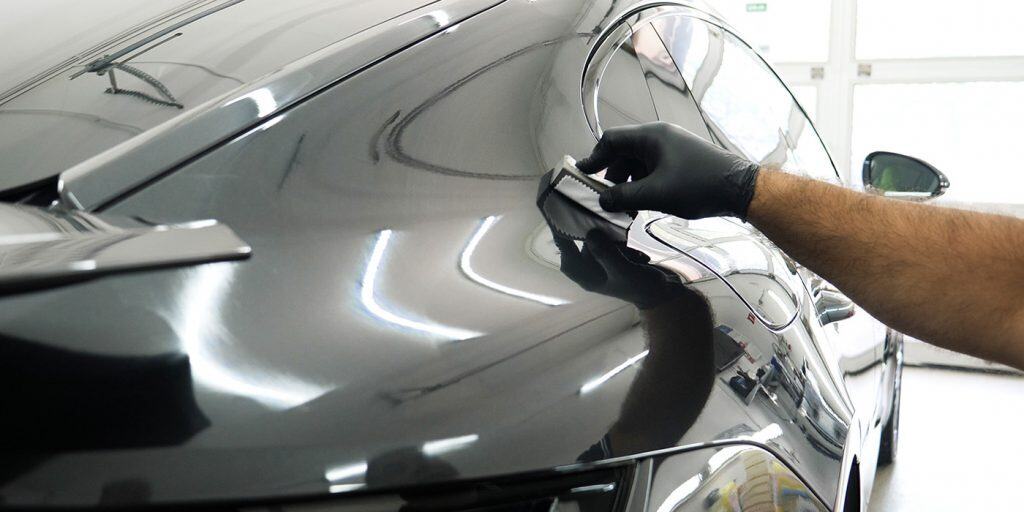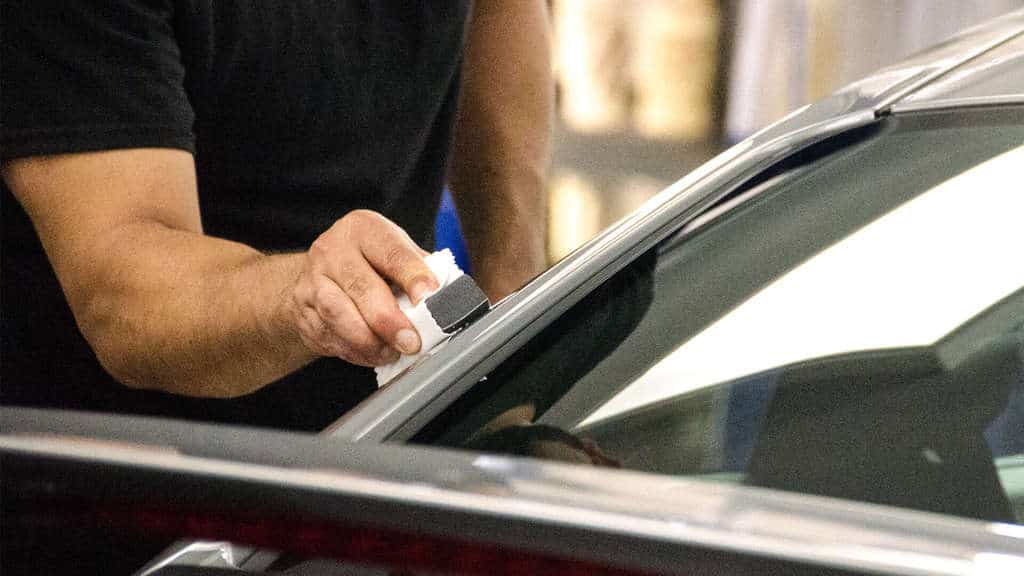Ceramic Coating for Cars: The Ultimate Solution for a Glossy Finish
Ceramic Coating for Cars: The Ultimate Solution for a Glossy Finish
Blog Article
Ceramic Layer vs. Traditional Wax: Which Gives Much Better Long-Term Protection?
The dispute between ceramic finishes and typical wax for lorry security has actually gathered significant attention amongst vehicle lovers and experts alike. Ceramic coverings boast superior long life and resistance to environmental aspects, yet the intricacy of their application elevates questions concerning availability and practicality.
Summary of Ceramic Covering
Ceramic finishing has obtained significant appeal among automobile lovers and detailers alike due to its advanced safety qualities. This cutting-edge innovation is made to create a durable, hydrophobic guard over a vehicle's paint surface area, substantially enhancing its resistance to environmental pollutants such as dirt, UV rays, and chemical discolorations. Unlike conventional wax, which gives a short-lived layer of defense, ceramic finishes bond at a molecular level with the paint, using durable toughness-- frequently expanding past 2 years with correct maintenance.
The application process involves thorough prep work of the lorry's surface, including cleaning and polishing to make sure optimum adhesion. As soon as used, the layer remedies to develop a robust layer that not just includes deepness and gloss to the paint yet additionally simplifies maintenance. With its hydrophobic residential properties, ceramic coating enables water and dust to glide off even more easily, decreasing the regularity of cleans and minimizing the risk of swirl marks.
Additionally, ceramic finishings are available in numerous solutions, permitting customers to pick items customized to their particular needs and preferences. On the whole, ceramic coating represents a considerable advancement in paint protection technology, providing exceptional performance contrasted to traditional alternatives.
Review of Typical Wax
Commonly concerned as a staple in auto care, wax acts as a popular selection for those seeking a straightforward approach to boost and secure their car's paint - ceramic coating. Automotive wax usually consists of natural ingredients, such as carnauba, or artificial substances, made to produce a safety layer on the surface area of the paint. This layer not just improves the car's gloss and shine but additionally supplies a barrier versus environmental impurities
The application of wax is usually straightforward, making it accessible for both specialists and do it yourself lovers. It can be applied by hand or equipment, enabling for adaptability in the outlining procedure. When used, wax requires a treating period, after which it hardens to form a protective shell. Wax is additionally known for its capability to push back water, promoting a beading result that helps in the avoidance of water places and rust.
Nonetheless, while wax is effective for boosting the visual appeal of a lorry, it is very important to note that the security it uses may require a lot more frequent reapplication contrasted to alternative items, such as ceramic finishings. In general, typical wax stays a favored option for those prioritizing convenience of use and prompt aesthetic improvement.
Longevity and Longevity Contrast
While both ceramic coatings and conventional wax offer safety advantages for automobile paint, their toughness and longevity vary considerably. Standard wax, commonly made from all-natural carnauba or synthetic polymers, normally supplies a safety layer that lasts around 3 to six months. This relatively short lifespan necessitates normal reapplication to keep optimum defense.
In comparison, ceramic coatings are crafted from advanced nanotechnology, forming a covalent bond with the paint surface. This leads to a robust, hydrophobic layer that can endure for two to 5 years, depending on the product and environmental problems. The premium longevity of ceramic finishes is connected to their chemical framework, which uses enhanced resistance to scratches, UV rays, and oxidation.

Protection Against Ecological Elements
Protecting an automobile's paint from environmental factors is critical for keeping its look and value with time. Automobiles are continuously exposed to a variety of aspects, including UV rays, bird droppings, tree sap, acid rain, and roadway gunk, every one of which can compromise the honesty of the paintwork.
Ceramic coatings give a durable protection against these ecological assailants. Unlike traditional wax, which can deteriorate swiftly under UV direct exposure, ceramic coatings create a resilient, hydrophobic layer that withstands the hazardous impacts of sunshine and environmental toxins. This sophisticated technology produces a chemical bond with the vehicle's surface, providing superior defense that lasts for many years, also in harsh conditions.
In contrast, ceramic layers preserve their safety qualities much longer, substantially reducing the danger of paint damage and making certain that the vehicle maintains its visual allure. As an outcome, ceramic layers are progressively recognized as the exceptional selection for lasting defense versus environmental aspects.
Application and Upkeep Differences
The methods of application and succeeding maintenance for ceramic finishes and traditional wax vary dramatically, impacting the general user experience and efficiency of each item. Ceramic finishings call for a more elaborate application procedure, usually entailing Bonuses surface area preparation that consists of washing, decontaminating, and polishing the lorry. As soon as the surface area is ready, the ceramic layer is applied in a controlled setting, typically requiring specialist experience to make sure appropriate curing and bonding to the paint.

While both products enhance car appearance, the longer-lasting security offered by ceramic finishes might warrant their initial investment, in spite of the even more requiring application process. On the other hand, standard wax continues to be a preferred selection for those seeking a less complex, albeit temporary, remedy.

Conclusion
In final thought, ceramic layers visit the website show considerable benefits over conventional wax in terms of toughness and ecological defense. With a lifespan extending two to five years and superior resistance to UV rays, dust, and chemical stains, ceramic finishes provide a much more reliable option for lasting vehicle upkeep. The application procedure might require professional knowledge, the resulting expense savings and lowered regularity of reapplication underscore the value of ceramic finishings for those looking for ideal vehicle protection.
The discussion between ceramic coatings and traditional wax for lorry defense has amassed substantial interest among automobile fanatics and specialists alike. Unlike conventional wax, which gives a short-lived layer of protection, ceramic finishings bond at a molecular level with useful source the paint, supplying durable durability-- commonly extending past two years with proper upkeep.
While both ceramic finishings and traditional wax offer safety benefits for vehicle paint, their sturdiness and long life vary dramatically. For automobile lovers seeking lasting protection, ceramic coatings provide an engaging advantage over typical wax products.
In conclusion, ceramic finishings show significant advantages over conventional wax in terms of toughness and environmental security.
Report this page